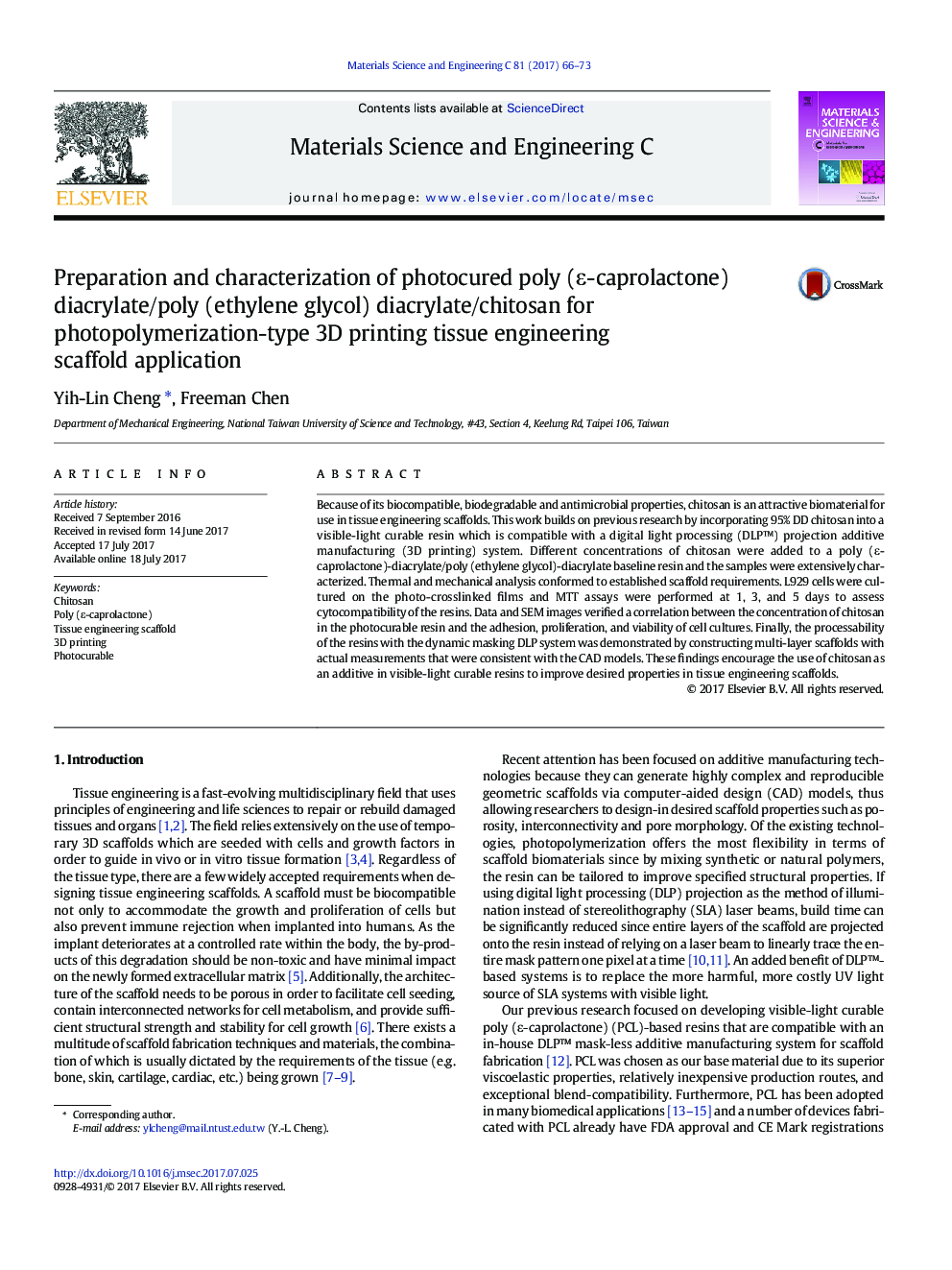| Article ID | Journal | Published Year | Pages | File Type |
|---|---|---|---|---|
| 5434214 | Materials Science and Engineering: C | 2017 | 8 Pages |
â¢Different concentrations of chitosan were added to photocurable PCL-DA/PEG-DA and multi-layer scaffolds were 3D printed.â¢Higher chitosan concentration results in lower melting temperature (Tm) and degradation temperature (Td).â¢The addition of chitosan reduced the tensile strength of the photocured structure, but notably improved hydrophilicity.â¢In vitro cell culturing demonstrates that chitosan can improve cell adhesion and proliferation.
Because of its biocompatible, biodegradable and antimicrobial properties, chitosan is an attractive biomaterial for use in tissue engineering scaffolds. This work builds on previous research by incorporating 95% DD chitosan into a visible-light curable resin which is compatible with a digital light processing (DLPâ¢) projection additive manufacturing (3D printing) system. Different concentrations of chitosan were added to a poly (ε-caprolactone)-diacrylate/poly (ethylene glycol)-diacrylate baseline resin and the samples were extensively characterized. Thermal and mechanical analysis conformed to established scaffold requirements. L929 cells were cultured on the photo-crosslinked films and MTT assays were performed at 1, 3, and 5 days to assess cytocompatibility of the resins. Data and SEM images verified a correlation between the concentration of chitosan in the photocurable resin and the adhesion, proliferation, and viability of cell cultures. Finally, the processability of the resins with the dynamic masking DLP system was demonstrated by constructing multi-layer scaffolds with actual measurements that were consistent with the CAD models. These findings encourage the use of chitosan as an additive in visible-light curable resins to improve desired properties in tissue engineering scaffolds.
